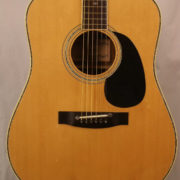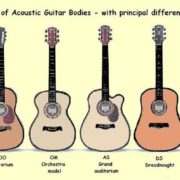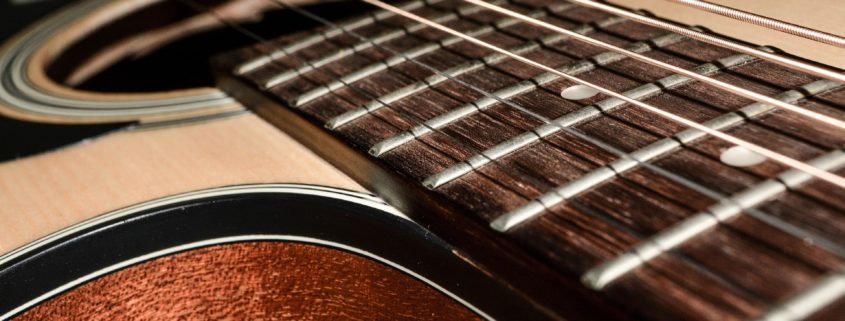How to Buy an Acoustic Guitar
I’m a huge fan of old acoustic guitars. They change their sound as they age. The tone and timbre of the guitar is affected as the woods and finishes age. If you’re lucky, it’s for the better. If you’re very lucky, it will sound more amazing every year you own it.
Old Guitars Sound Good?
 I only buy guitars that are at least 15 years old now. I figure they’ve about finished their transition from great to legendary, and that’s when I want to start playing them. My favourite acoustic that I own is a 1979 Fender F65. It wasn’t expensive, but it’s solid and it sounds incredible to me.
I only buy guitars that are at least 15 years old now. I figure they’ve about finished their transition from great to legendary, and that’s when I want to start playing them. My favourite acoustic that I own is a 1979 Fender F65. It wasn’t expensive, but it’s solid and it sounds incredible to me.
So wood affects the sound, does it? You bet. It’s made mostly of rosewood, which gives a punchy, almost piano-like sound to the strings. The front of the guitar is a slice of spruce which gives it that really rigid feel and brings out the attack on notes, especially when strummed.
If the body were made of maple instead, the sound would be a lot stronger on the higher strings and have a bit less punch on the low notes. Old, old guitars were very often made of maple, and it’s rarer now than it used to be.
Most guitars are made of a mixture of woods in order to highlight different parts of the sound. It’s common for there to be 3 or 4 types of wood used – ones for the sides and back, the front, the neck, and fretboard. All of these locations affect the sound of the guitar in different ways. It’s not very important when you’re out hunting for your first acoustic, necessarily, but it’s worth doing some research if you have the budget for a better guitar.
What About the Size?
 Another differentiating feature of guitars is their shape. Some are small and meant for either small rooms or small hands. Most are mid-sized like my trusty F65 dreadnought and can handle just about everything. Then there are the jumbo guitars – great big beasts meant to cut through a band and wreck microphones. Any of those sizes might have a cutaway on one side, allowing your hand to reach the higher notes on the fretboard. This can be useful, although there isn’t necessarily a lot of acoustic music that requires that amount of freedom.
Another differentiating feature of guitars is their shape. Some are small and meant for either small rooms or small hands. Most are mid-sized like my trusty F65 dreadnought and can handle just about everything. Then there are the jumbo guitars – great big beasts meant to cut through a band and wreck microphones. Any of those sizes might have a cutaway on one side, allowing your hand to reach the higher notes on the fretboard. This can be useful, although there isn’t necessarily a lot of acoustic music that requires that amount of freedom.
One important thing to be aware of is that acoustic, classical and flamenco guitars are all different kinds of guitars. The biggest difference that is important to most people is that classical and flamenco guitars use nylon for the higher strings instead of metal. If the metal strings hurt your fingers, you can put nylon strings on your acoustic until you start to build up some callus.
So What’s The Recommendation?
Finally, the single most important thing about buying a good acoustic guitar is … play a whole lot of them! You are looking for an instrument you can hold for an extended period of time with comfort, so find the right size for your body. If you want to play very strummy songs around campfires with a few other people, you can either go for straight volume and get a loud guitar, or something that can cut through the rest of the music and be heard without being overpowering. Remember that if you don’t like the strings on a guitar, they can be easily changed to be thinner or thicker or brighter sounding or thumpier sounding. Looks are not important for guitars, but avoid ones with obvious structural or moisture damage – they can be tricky and expensive to repair and re-finish.
Always buy the best guitar you can afford that sounds good and fits well. A more expensive instrument is only better if it feels better to you and sounds better to you.
Please ask any questions in the comments below and I’ll try and answer as well as I can.
Metaloha!




Leave a Reply
Want to join the discussion?Feel free to contribute!